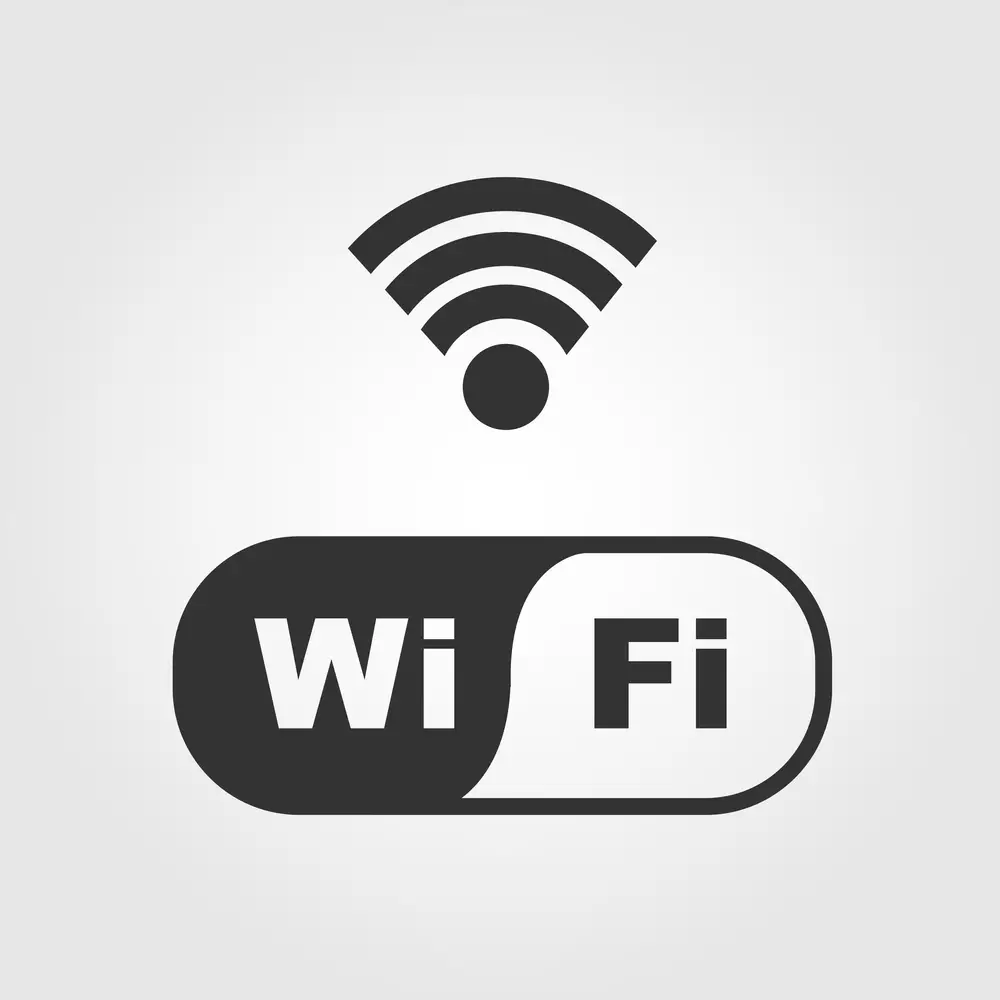Ceiling fans are a common household appliance, but could they be interfering with your WiFi signal? Can a ceiling fan interfere with WiFi? The answer is yes.
The electromagnetic radiation emitted by a ceiling fan motor can potentially cause interference with your WiFi connection. It’s important to be aware of this issue and take steps to mitigate any potential interference.
Key Takeaways
- Ceiling fans can interfere with Wi-Fi signals, but the impact is usually minimal and depends on various factors like the distance between the fan and the router, the materials used in the room, and the type of fan.
- To minimize Wi-Fi interference from ceiling fans, you can try relocating your router, using a different frequency band, or investing in a fan with a DC motor, which generates less electromagnetic interference.
- Other culprits of Wi-Fi interference include electronic devices, metal surfaces, and thick walls. Understanding the sources of interference and how to mitigate them can help you maintain a strong and reliable Wi-Fi signal.
Understanding Wi-Fi Signal Basics
When it comes to understanding how a ceiling fan can affect your Wi-Fi signal, it’s important to first understand the basics of Wi-Fi signals.
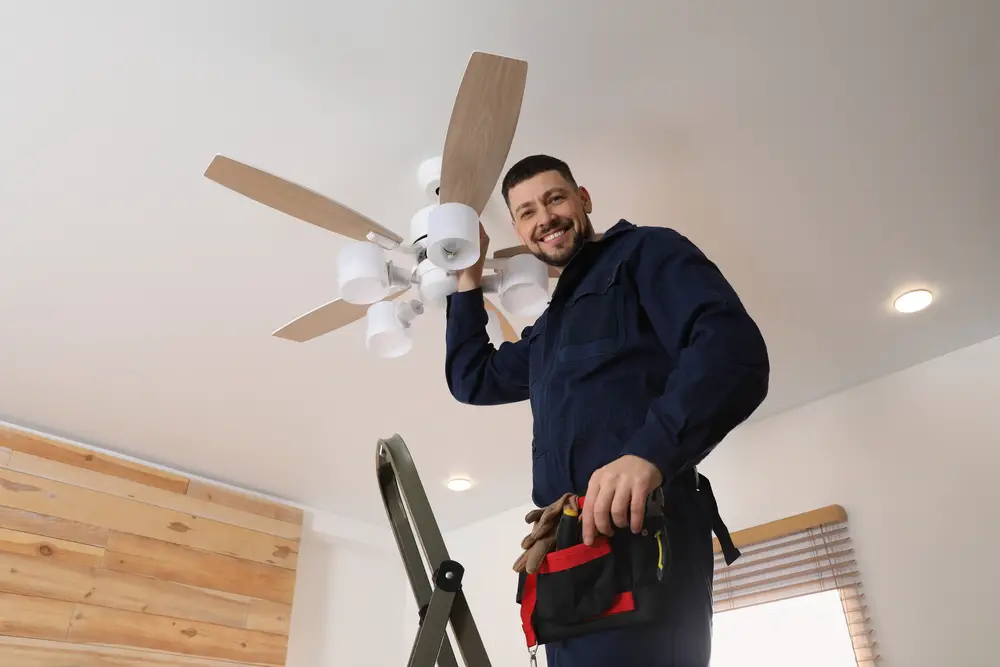
A Wi-Fi signal is a type of wireless signal that allows devices to communicate without the use of cables. Wi-Fi signals are transmitted through routers, which act as the central hub for your wireless network.
The strength of your Wi-Fi signal is measured in decibels (dBm). The closer to zero the number is, the stronger the signal. For example, a signal of -30 dBm is stronger than a signal of -80 dBm.
It’s important to note that Wi-Fi signals are not always stable and can fluctuate depending on a variety of factors. One of the most common factors that can affect Wi-Fi signals is the frequency of the signal.
Most Wi-Fi signals operate on either a 2.4GHz or 5GHz frequency. The 2.4GHz frequency is more common and is used by most routers. However, this frequency can be easily disrupted by other devices that operate on the same frequency, such as microwaves or cordless phones.
On the other hand, the 5GHz frequency is less common but offers faster speeds and is less likely to be disrupted by other devices. However, it has a shorter range and can be blocked by walls and other obstacles.
Common Sources of Wi-Fi Interference
When it comes to Wi-Fi interference, there are several common sources that can cause issues with your connection. Here are some of the most common culprits:
Electronic Devices

Electronic devices such as televisions, gaming consoles, and even LED light bulbs can emit radio frequencies that interfere with your Wi-Fi signal.
If you notice that your Wi-Fi connection is slow or unstable, try moving these devices away from your router or access point.
Mirrors

Mirrors can also interfere with Wi-Fi signals. The coating that changes a sheet of glass into a mirror is metallic.
Large wall mirrors have a bigger impact than smaller mirrors and older mirrors affect Wi-Fi more than newer ones (on account of the older mirrors containing actual silver and not the less expensive backings found in newer mirrors).
Appliances
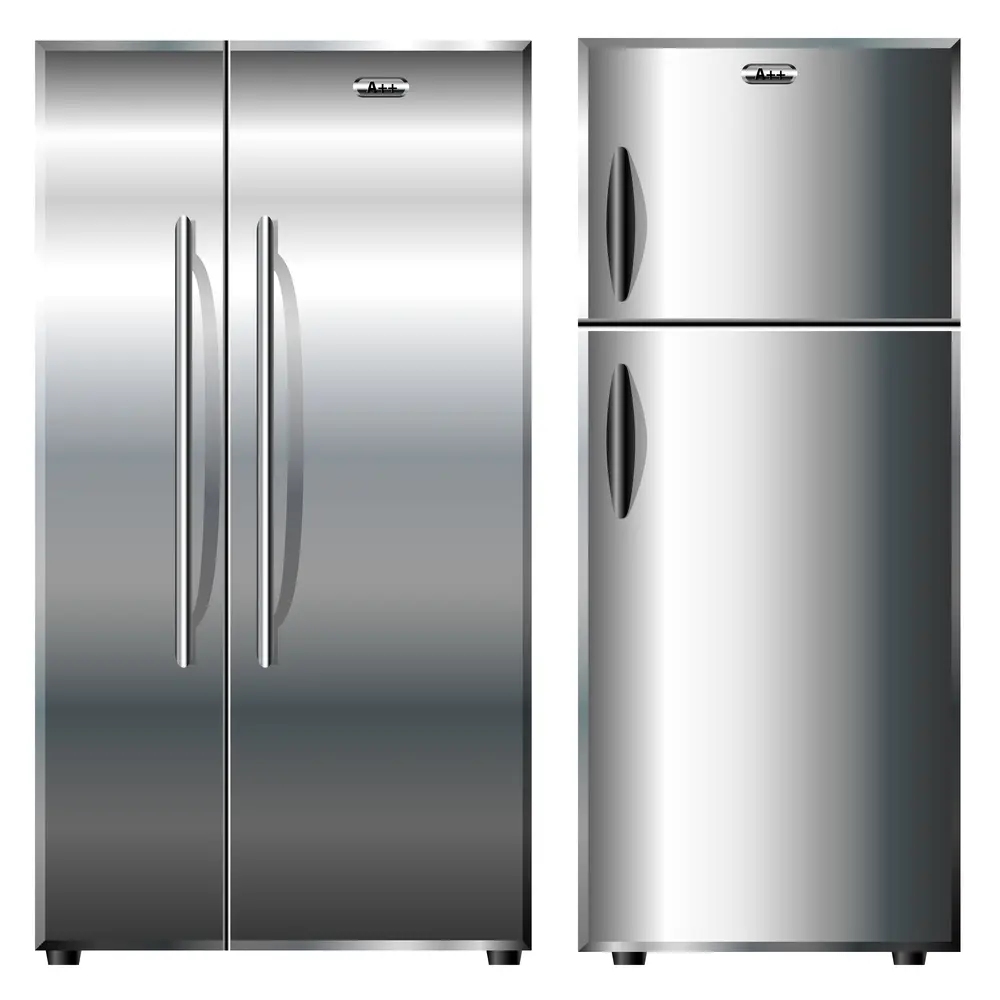
Appliances such as refrigerators, washing machines, and dryers can also cause Wi-Fi interference. These devices can emit electromagnetic radiation that can interfere with your Wi-Fi signal. Try moving your router or access point away from these appliances to improve your Wi-Fi connection.
Cordless Phones
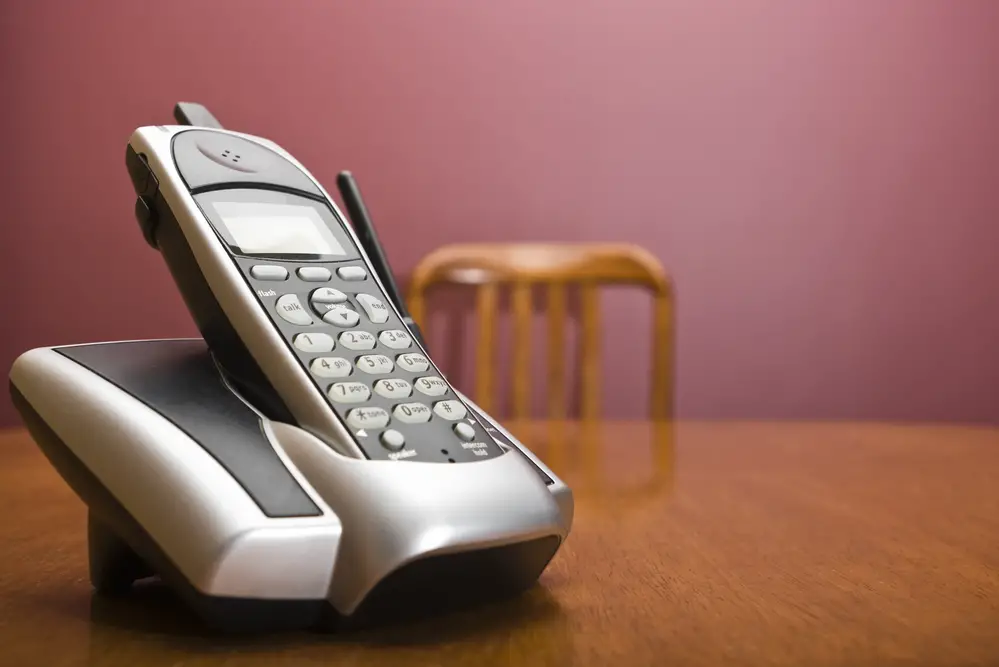
Cordless phones can also interfere with Wi-Fi signals. These phones operate on the same frequency as Wi-Fi signals (2.4 GHz), which can cause interference. If you have a cordless phone, try moving it away from your router or access point.
Microwave Ovens
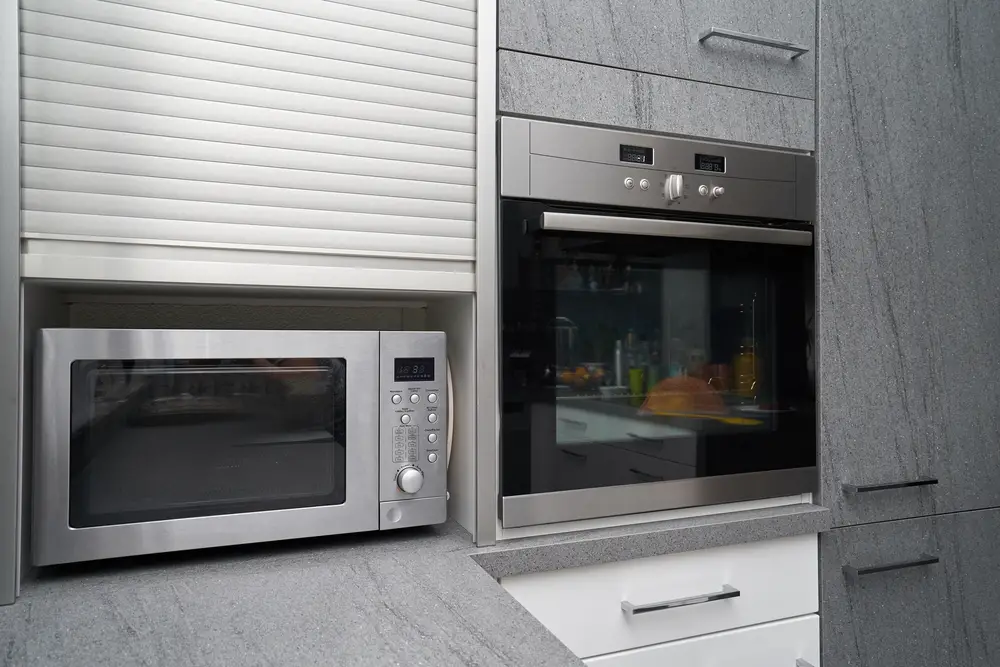
Microwave ovens are another common source of Wi-Fi interference. These devices operate on the same frequency as Wi-Fi signals (2.4 GHz), which can cause interference. If you notice that your Wi-Fi connection is slow or unstable when using your microwave, try moving your router or access point away from the microwave.
Baby Monitors

Baby monitors can also cause Wi-Fi interference. These devices operate on the same frequency as Wi-Fi signals (2.4 GHz), which can cause interference. If you have a baby monitor, try moving it away from your router or access point.
Neighbors
Your neighbors’ Wi-Fi networks can also cause interference with your Wi-Fi signal.
If many networks are located closely together, for example in apartment buildings, this will affect the wireless capacity. For equipment on the 2.4 GHz band, neighboring networks are the single largest source of interference on the wireless network.
If you notice that your Wi-Fi connection is slow or unstable, try changing the channel on your router to avoid interference from your neighbors’ networks.
By being aware of these common sources of Wi-Fi interference, you can take steps to improve your Wi-Fi connection and enjoy a faster, more stable internet experience.
How a Ceiling Fan Can Interfere with Wi-Fi
Ceiling fans are a common household appliance that can help circulate air and keep your home cool.
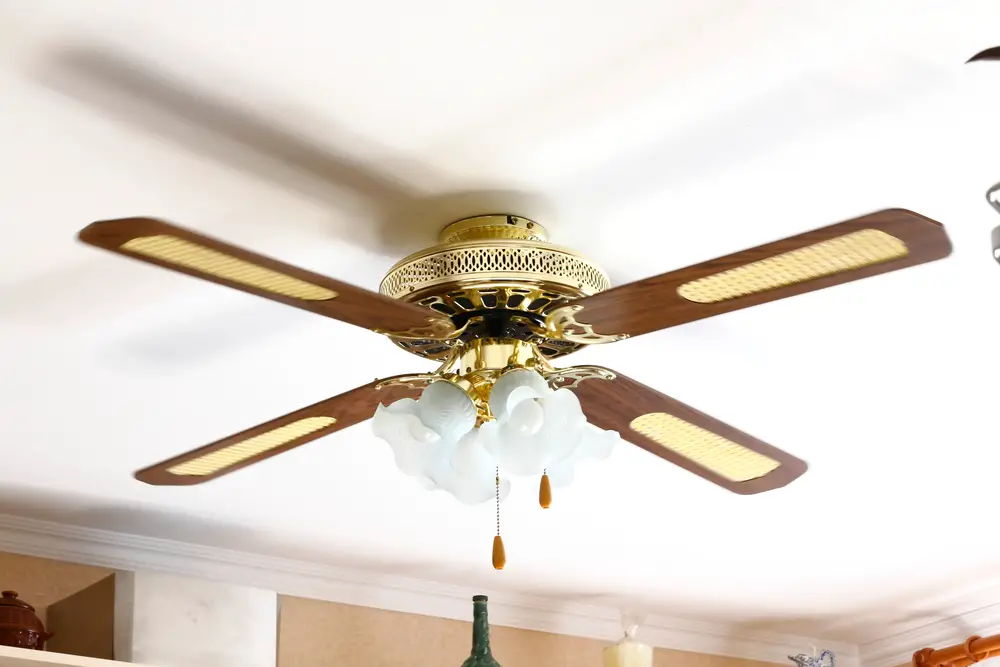
However, you may wonder if they can interfere with your Wi-Fi signal. The short answer is that it’s possible, but unlikely.
When a ceiling fan is turned on, it creates a magnetic field due to the spinning blades and motor.
This magnetic field can potentially interfere with your Wi-Fi signal, which is also an electromagnetic field. However, the strength of the magnetic field generated by a ceiling fan is generally not strong enough to cause significant interference with your Wi-Fi signal.
It’s important to note that interference from a ceiling fan is just one of many possible factors that can affect your Wi-Fi signal strength.
Other factors, such as the distance between your device and the router, the presence of other wireless networks in the area, and physical barriers like walls, can also impact your Wi-Fi signal.
If you’re experiencing Wi-Fi connectivity issues and suspect that your ceiling fan may be the culprit, you can try a few things to mitigate the interference. One option is to move your router to a different location in your home, away from the ceiling fan.
You could also try adjusting the speed of your ceiling fan to see if that makes a difference.
In summary, while a ceiling fan can potentially interfere with your Wi-Fi signal, it’s not a common issue. If you’re experiencing Wi-Fi connectivity problems, it’s more likely that other factors are at play.
| Pros | Cons |
|---|---|
| Gentle and controlled air flow | Ceiling fans with metal blades may cause interference |
| Unlikely to cause significant disruptions | Outdoor airflow can cause interference |
| Minimal impact on Wi-Fi signal strength | Placement of Wi-Fi router can impact signal strength |
Materials That Can Affect Wi-Fi Signal
When it comes to Wi-Fi signal, certain materials in your home can interfere with the signal strength. Here are some materials that can affect your Wi-Fi signal:
| Material | Effect on Wi-Fi Signal |
|---|---|
| Drywall | Drywall is a common material used in most homes. However, it can absorb and weaken Wi-Fi signals. The thicker the drywall, the more it can interfere with your Wi-Fi signal. |
| Cable | Electrical cables can cause interference with Wi-Fi signals. This is because they can emit electromagnetic interference (EMI) that can affect the Wi-Fi signal. |
| Mirrors | Mirrors are made of glass and metal, which can reflect Wi-Fi signals. This can cause signal interference and weaken the Wi-Fi signal. |
| Appliances | Appliances that emit electromagnetic radiation can interfere with Wi-Fi signals. This includes microwaves, refrigerators, and televisions. |
If you have any of these materials in your home, they can be affecting your Wi-Fi signal. However, there are some things you can do to improve your Wi-Fi signal strength.
One solution is to move your router to a more central location in your home. This can help to improve the signal strength by reducing the distance between your devices and the router.
Another solution is to use a Wi-Fi extender or a mesh network. These devices can help to extend the range of your Wi-Fi signal by boosting the signal strength and spreading it throughout your home.
In conclusion, certain materials in your home can interfere with your Wi-Fi signal strength. By understanding which materials can affect your signal, you can take steps to improve your Wi-Fi signal and enjoy faster internet speeds.
Mitigating Wi-Fi Interference from Ceiling Fans
Ceiling fans are a common household appliance that can be found in many homes and small offices. However, they can also cause interference with your wireless network. In this section, we will discuss how to mitigate Wi-Fi interference from ceiling fans.
One way to mitigate Wi-Fi interference from ceiling fans is to ensure that your router is placed in an optimal location. Ideally, your router should be placed in a central location in your home or office, away from any obstructions. This will help to ensure that the signal is evenly distributed throughout the space and that it is not blocked by any objects, including ceiling fans.
Another way to mitigate Wi-Fi interference from ceiling fans is to use a dual-band router. Dual-band routers operate on both the 2.4 GHz and 5 GHz frequency bands. The 5 GHz band is less susceptible to interference from household appliances, including ceiling fans. Therefore, using a dual-band router can help to reduce interference from ceiling fans and other household appliances.
If you are experiencing interference from a ceiling fan, you may also want to consider changing the channel on your router. Some channels are more susceptible to interference than others. By changing the channel on your router, you may be able to reduce interference from your ceiling fan and other sources.
Finally, you may want to consider using a Wi-Fi range extender or a mesh network. These devices can help to extend the range of your wireless network and ensure that the signal is evenly distributed throughout your home or office. This can help to reduce interference from ceiling fans and other sources.
| Method | Description |
|---|---|
| Optimal Router Placement | Place your router in a central location, away from obstructions |
| Dual-Band Router | Use a router that operates on both the 2.4 GHz and 5 GHz frequency bands |
| Change Router Channel | Change the channel on your router to reduce interference |
| Wi-Fi Range Extender | Use a range extender to extend the range of your wireless network |
| Mesh Network | Use a mesh network to ensure that the signal is evenly distributed throughout your home or office |
By following these tips, you can mitigate Wi-Fi interference from ceiling fans and ensure that your wireless network is operating at peak performance.
Conclusion
In conclusion, it is unlikely that a ceiling fan will interfere with your Wi-Fi signal. While some sources suggest that certain radio waves may cause interference, such as those from baby monitors or walkie-talkies, there is no evidence to suggest that ceiling fans have a significant impact on Wi-Fi connectivity.

